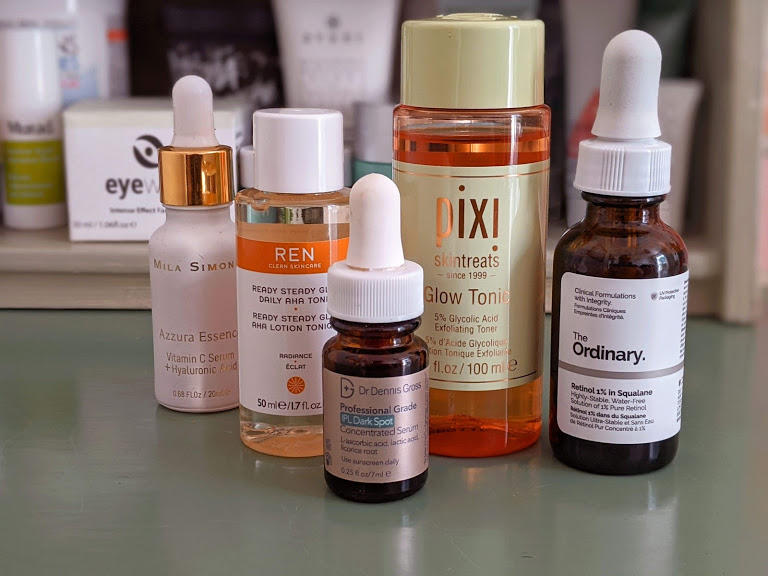
Exfoliating is an important part of your skincare routine – it removes dead skin cells, helps to keep pores clear and smooths skin, amongst other benefits. While it is widely accepted that chemical exfoliants are much better for your skin than physical exfoliators and scrubs, chemical exfoliants still offer up a few problems for the casual skincare user. Namely, what on earth they are and how you can use them.
As someone super into their skincare, I’ve tried many different types of chemical exfoliant and have a pretty good grasp of what works best for me. But I often get a lot of questions from others on how they can incorporate acids into their skincare routine. The most common queries relate to which types of acid they should use, as well as which products they should avoid using when applying a chemical exfoliant. In this blog post, I am to answer all these big questions on chemical exfoliators.
AHAs Vs BHAs
The first thing to know about chemical exfoliators is that there are two main types: Alpha Hydroxy Acids (AHAs) and Beta Hydroxy Acids (BHAs). These acids are all naturally derived from products such as fruit, milk and plants.
There are a few key differences between AHAs and BHAs that I will explore here:
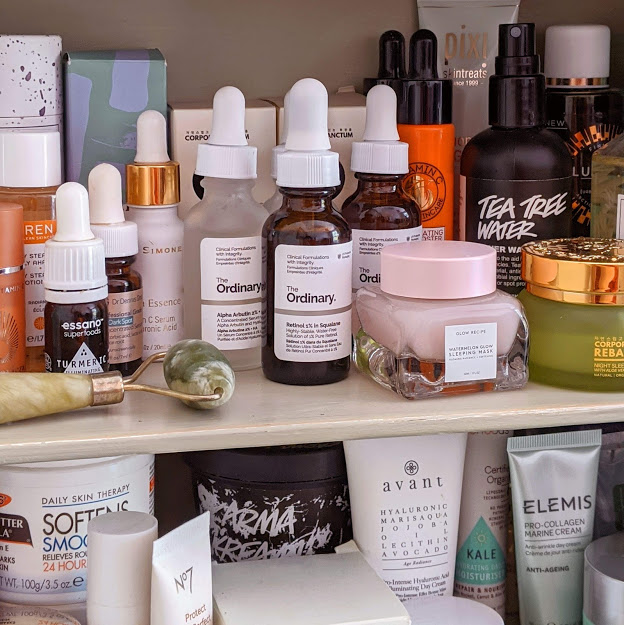
Guide to AHAs
AHAs can do a lot for our skin. The ‘glue’ that holds our skin cells together is dissolved by AHAs, thus removing dead skin and leaving skin smoother. AHAs also help to hydrate the skin and can reduce the appearance of dark spots and wrinkles. Certain types of AHAs will also do extra, for example, using glycolic acid will see your collagen production boosted.
The most common types of AHAs found in skincare products include:
- Glycolic Acid
- Lactic Acid
- Citric Acid
- Mandelic Acid
Which AHA Should You Use?
Glycolic acid is widely considered the best AHA because it is a great multi-tasker. As well as exfoliating, smoothing skin and producing collagen, it can also help to make skin thicker and firmer. As a reference point, Pixi’s iconic Glow Tonic uses glycolic acid, so the typical benefits of using this would be to gain a smooth and glowing complexion.
Some people find glycolic acid to be too much for their skin though, so you can either find one with a lower percentage of acid in the product or use lactic acid if you have sensitive skin. Lactic acid is usually the gentlest type of AHA, so if you want to try one out but worry your skin will be too sensitive, then this is the one to start with.

Who Are AHAs For?
AHAs are best for people who have dry skin, sensitive skin or sun-damaged skin, as they are hydrating.
Remember to Use Sun Cream!
Because exfoliating is essentially removing the top layer of skin, using an AHA increases your skin’s sensitivity to UV rays, so it is absolutely crucial that you use a sun cream afterwards. This is especially important if you are exfoliating in the morning.
Guide to BHAs
We say ‘BHAs’, but the reality is that there is only one we use in skincare – salicylic acid. Salicylic acid derives from the bark of the willow tree, and it is an absolute godsend for oily skin types.
BHA exfoliates the skin as AHAs do, but on top of this, they are able to penetrate your pores and unclog them. BHA also reduces dark spots and the appearance of fine lines on your face. If that wasn’t enough, then BHA also offers anti-inflammatory properties, making it great for soothing the skin and reducing redness.
Who Are BHAs For?
Because BHA is oil-soluble and can unclog pores, it is incredible for those with oily skin or acne. It can also be good for those who find AHAs too much for their skin, as it is more effective at lower concentrations than AHAs, making them less likely to cause irritation.
Sun Cream Time
As with AHAs, any exfoliator you use will remove the uppermost layer of skin, leaving you more at risk from the sun. Be sure to apply sun cream after exfoliating.
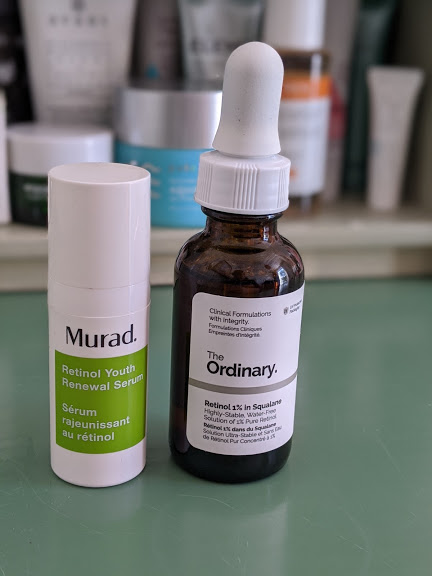
Other Types of Acid
Aside from AHAs and BHA, there are a number of other types of acid used in skincare.
Retinoic Acid
Retinoic acid is a form of vitamin A that helps to boost your skin’s natural exfoliating process and production of collagen. Of all the options, retinoic acid is one of the harshest on the skin, and can even cause peeling and irritation.
However, there are other forms of retinoic acid, such as retinol, are gentler on the skin (although can still cause irritation).
L-Ascorbic Acid
L-Ascorbic Acid is the pure form of vitamin C, which helps to brighten skin and boost collagen. It is pretty effective; however, it is a very unstable acid, meaning it really quickly goes bad when it comes into contact with light, air or heat. Therefore, many people prefer other vitamin C products instead, even if they are a bit weaker.
Hyaluronic Acid
While it’s called hyaluronic ‘acid’, it’s not really an acid in the same way as AHAs and BHAs, and is instead technically a sugar. Instead of exfoliating your skin, hyaluronic acid hydrates by attracting water in the air to your skin. The extra moisture makes your skin plumper, brighter and softer.
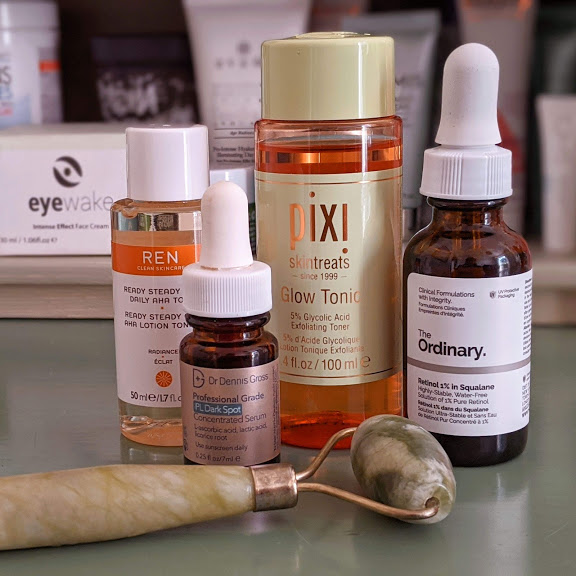
Which Acids Can You Use Together?
Acids are amazing, and when you hear about what each can do for your skin, it can be tempting to try and layer them up to get the most out of your skincare routine. However, there are some acids that you should probably avoid using together.
I’m not saying that if you mix two different AHAs, or an AHA and BHA together, your skin will melt and fall off, just that using too many acids can cause irritation and redness, and may leave you with overly sensitive skin.
It’s always worth checking the packaging of the product you are using as it may indicate that the specific formula shouldn’t be used with another product, even if it is usually ok.
Use Specially Formulated Products
That’s not to say that you can’t use multiple acids. Some products will make use of multiple kinds of acid at once; however, these will have been specially formulated with specific quantities of acid to ensure it benefits your skin rather than irritates.
So, it’s best to avoid using both AHA and BHA in your skincare UNLESS you have a product which includes both, as this will have the right strengths to avoid disaster!
Retinol
Technically, it is absolutely fine to use both retinoids and AHA/BHA in your skincare routine, if your skin can handle it, but the actuality is that you probably don’t need to. It has the potential to cause inflammation, irritation, redness and dryness, as your skin might find the combo too much. If that’s the case for you, but you want to use both, try alternating each night.
Vitamin C
One thing you may need to consider is the use of vitamin C in your skincare routine. Some vitamin C products can cause irritation when used together with an AHA or retinoid. If you want to include both in your skincare routine, then use the vitamin C in the morning and the acid in the evening.
Use Hyaluronic Acid
Hyaluronic acid is good to be used with everything! It is super hydrating, which makes it perfect to use after acid exfoliants, which can be drying to your skin.
Hopefully, this has explained the world of acids and chemical exfoliants a little better! Feel free to drop me a comment below if you have more questions though!

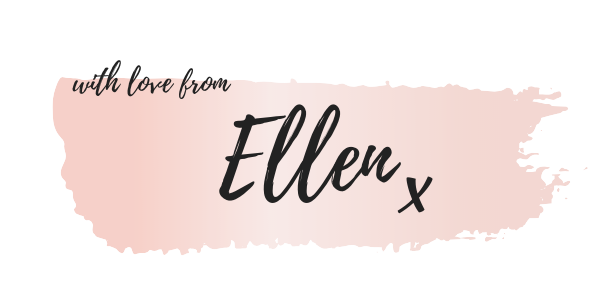
This post is so informative. It’s definitely learnt me a lot about the different type of skincare acids and what is best for my skin x